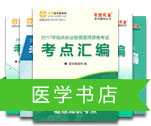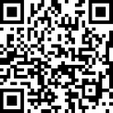| Assisting a Client to the Sitting Position | 协助病人起坐 |
| A partially immobilized or weak client will require nursing assistance to sit up in bed. The nurse can help such a client attain the sitting position while maintaining proper body alignment for herself and the client, Correct positioning techniques will reduce the risk of musculoskeletal injury to all persons involved. | 局部固定或体弱病人在床上坐起时需要护理协助。护士能够帮助此病人达成坐位,并保持身体正位。手势正确可以减少相关人员肌肉骨骼损伤的危险。 |
Potential Nursing DiagnosesImpaired physical mobility
Activity intolerance
Impaired skin integrity | 潜在护理诊断躯体活动受损
活动不耐受
皮肤完整性受损 |
1. Wash hands and, if appropriate, don gloves.
* Reduces transmission of microorganisms. | 1. 洗手,带手套。
*减少细菌传播 |
2. Place client in supine position.
* Enables you to continually assess client's body alignment and administer additional care, such as suctioning or hygiene needs. | 2. 使病人仰卧
* 便于护士持续评估病人体位,实施抽吸、卫生等其他护理 |
3. Remove all pillows.
* Decreases interference while sitting client up in bed. | 3. 去枕
* 减少病人床上坐起障碍。 |
4. Face head of bed.
* Reduces twisting of your body when moving client. | 4. 面向床头。
* 减少移动病人时身体扭伤危险。 |
5. Place your feet apart with foot nearer bed behind other foot.
* Improves your balance and allows you to transfer your body weight as client is moved to sitting position. | 5. 双脚开立,一脚在前靠床,另脚在后
* 改善护士身体平衡,便于护士在病人移至坐位时转移自身体重。 |
6. Place hand that is farther from client under client's shoulders, supporting his head and cervical vertebrae.
* Maintains alignment of client's head and cervical vertebrae and allows for even lifting of his upper trunk. | 6. 一手(离病人稍远的手)置于病人肩下,支撑病人头、颈
* 保持病人头、颈正直,便于平稳抬起病人上身 |
7. Place your other hand on bed surface.
* Provides support and balance. | 7. 另一只手放于床面
* 提供支撑和平衡 |
8. Raise client to a sitting position by shifting your weight from front leg to back leg.
* Improves your balance, overcomes inertia, and transfers your weight in direction of move. | 8. 重心由前腿移至后腿,扶起病人至坐位
* 改善身体平衡,克服惯性,使体重重心与移动方向一致 |
9. Push against bed with the hand that is on bed surface.
* Divides activity of raising client to a sitting position between your arms and legs and protects your back from strain.
* By bracing one hand against mattress and pushing against it as you lift client, you transfer part of weight that would be lifted by your back muscles to your arm and onto mattress. | 9. 手撑床铺
* 将手、腿分担扶起动作,防止背部扭伤
* 抬起病人时,一手撑床、下按,将背部肌肉承担的部分重力转移到手臂和床垫 |
10. Remove gloves and wash hands.
* Reduces transmission of microorganisms | 10. 脱去手套,洗手。
* 减少微生物传播。 |
11. Record client's new position in nurse's notes.
* Documents that procedure was performed. | 11. 将病人新体位记录在护理记录上。
* 记录操作已经完成 |
| Nurse AlertThe nurse must avoid dragging a client up in bed. Dragging against the bed linen causes shearing force. In addition, she should carefully observe the client for signs of development of postural hypotension (e.g., dizziness, fainting). | 注意事项:必须避免在床上拖拉病人,床上拖拉会产生剪力。此外,护士还应仔细观察病人有无出现体位性低血压体症(如头晕、昏厥)。 |
| Client TeachingThis skill provides an opportunity for the client and family to learn appropriate body alignment for the sitting position. | 病人宣教:本技能使护士有机会教育病人和家人了解坐姿时的正确身体定位。 |
| Pediatric ConsiderationsChildren are usually easy to move, and the nurse may be able to simply raise a child to the sitting position. | 儿科:儿童容易移动,护士可轻易地扶起儿童至坐位。 |
| Geriatric ConsiderationsElderly clients with degenerative joint disease (osteoarthritis) are at greater risk than are younger clients of shoulder joint dislocation while being moved. In addition, their decreased muscle mass and reduced skin elasticity; and skin moisture increase the risk of skin breakdown from shearing force. | 老年病人:有退行性关节疾病(骨关节炎)的老年病人,在移动时出现肩关节脱臼的危险要大于年轻病患。而且,老年病人肌肉萎缩、皮肤弹性降低及皮肤水份减少也会增加剪力引起的皮肤开裂的危险。 |










 扫一扫立即下载
扫一扫立即下载


